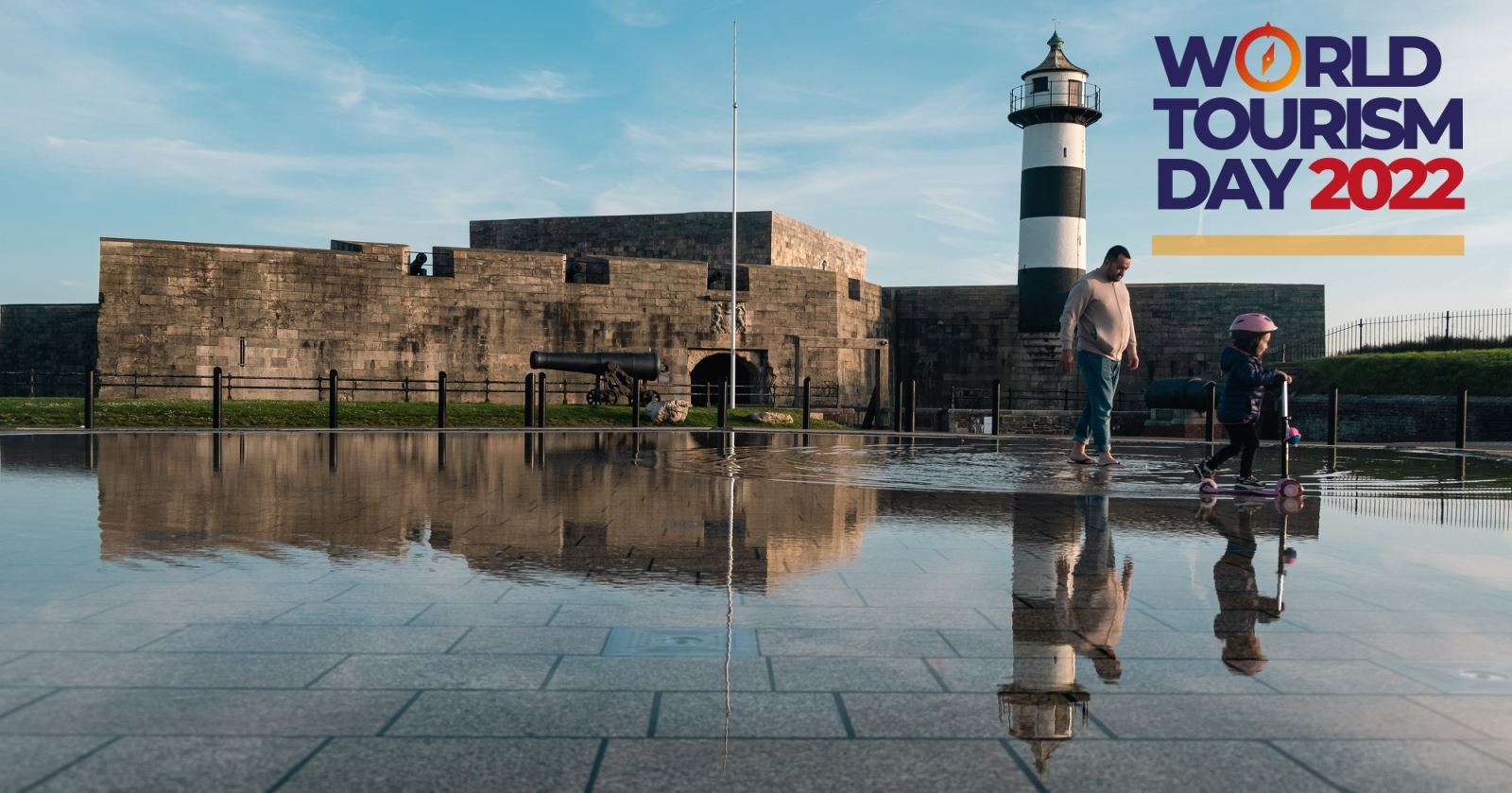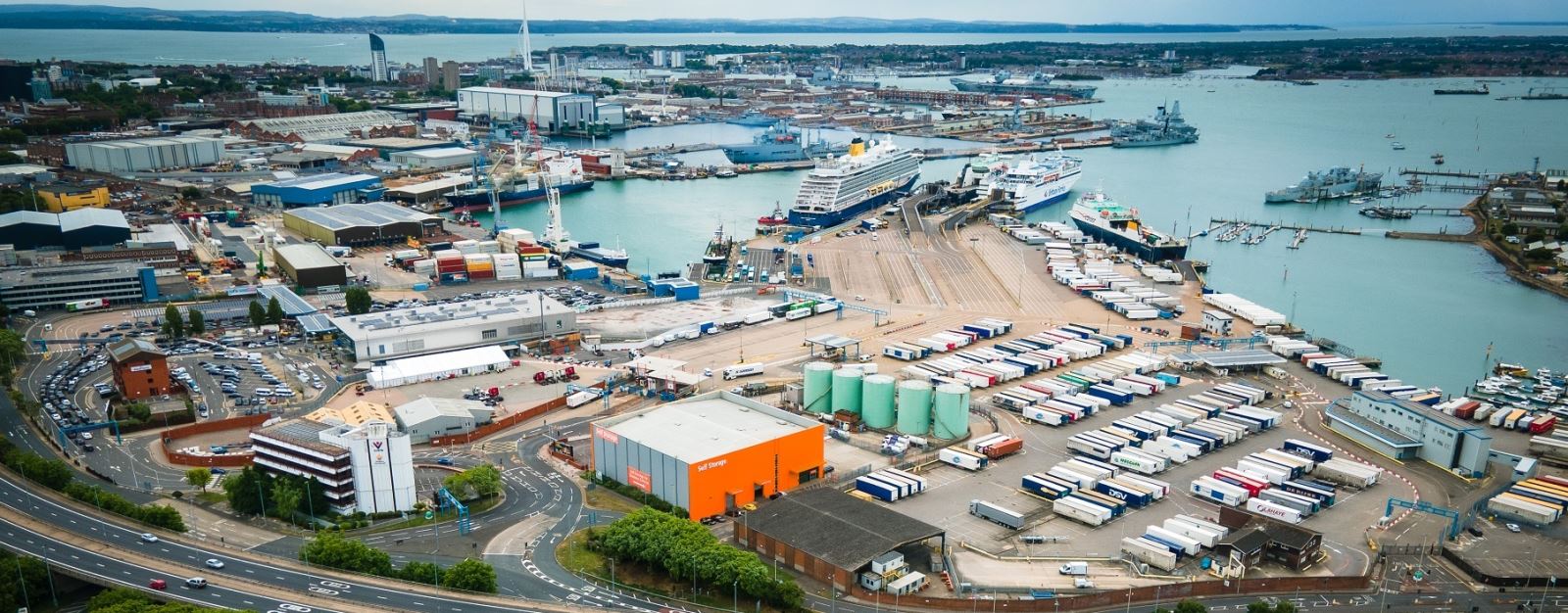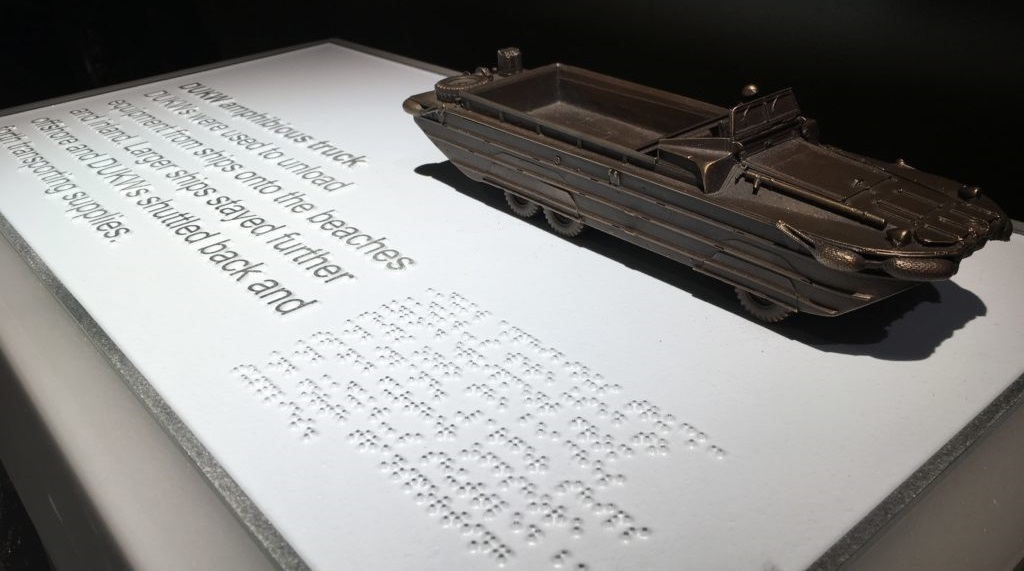September 27 marks World Tourism Day - which was created to not just celebrate the tourism industry but also inform changes to help it grow and flourish. Around one in ten people across the world are employed within the tourism industry and, during 2019 alone, tourism in England generated over £100 billion to the economy (Visit Britain).

This year, World Tourism Day is focusing clearly on the future, as we continue to recover from the impacts of the global pandemic. It's calling for a rethink of how we do tourism, with more of a focus than ever before on people and place. All this is concentrated on tourism that is sustainable, innovative and inclusive.
Thankfully, you don’t have to go far to find examples of all three right here in Portsmouth.
Sustainable
Portsmouth International Port has been on a journey of its own in recent years, with ambitions to not just grow its cruise business, but also become one of the UK's very first zero carbon ports.

The port aims to reach this target by improving both air quality and its carbon footprint.
Steps have already been undertaken to improve sustainability, not least with the installation of a solar panel array, including solar carports (the first for a UK port).
It has also seen the installation of 1MW lithium-ion battery energy storage systems (BESS), to store renewable energy from its solar arrays.
Elsewhere, the port's own light vehicles and vans are electric-powered, and there are electric vehicle charging ports available to customers on site.
Any heavy machinery still using diesel (such as cranes) now use Gas to Liquid fuel, to reduce emissions (including particulates), as well as pre-filtered oil to screen out particles - whilst also improving fuel efficiency.
Perhaps the most important, though, is the port's dedication to honesty. It has installed air quality sensors around the site, providing live data 24/7, and pledged to "be open and transparent with our air quality monitoring data." This also means investing in the latest technology to capture what’s happening at the port and what’s having an effect.
You can find out more about this sustainability drive, including the many other measures being taken, on the Portsmouth International Port website.
Innovative
The ships at Portsmouth Historic Dockyard may be centuries old, but the techniques used in preserving them are anything but! Scientists, shipbuilders and conservationists all come together, to ensure these world-renowned ships remain open and visible for generations to come.
Today, the biggest of these conservation works involves HMS Victory - the pride of Nelson's fleet and the oldest warship on earth still in commission. Despite still technically in active service, Victory is in need of protection from the moisture, fungus and pests that threaten her. As such, an enormous, once-in-a-lifetime project is currently being undertaken to preserve the 250-year-old ship.
Of course, such restoration works would typically detract from the visitor experience, with attractions considering closing to the public or marking off whole sections as inaccessible. However, the National Museum of the Royal Navy has done something very different. With 'Victory Live: The Big Repair', the museum has put visitors at the heart of the project, to see the huge amount of work that goes into maintaining such a nationally important vessel.
Throughout the project, visitors to HMS Victory will be able to go up close and see the painstaking work taking place to preserve her. Visitors can meet the incredible teams of craftsmen, conservators, engineers and shipwrights working to protect Victory and get unparalleled insight into the scale of the job at hand.
Repeat visitors will have plenty to go back for, with the experience evolving alongside the project itself.
You can find out more about Victory Live: The Big Repair on the National Museum of the Royal Navy website.
Inclusive
When LCT 7074 was restored, then moved into place outside of The D-Day Story, it was done with more in mind than just becoming a fascinating new visitor attraction. A great deal of thought was put into making it as accessible as possible - no mean feat for a vessel built to transport troops and tanks across the English Channel and not with the aim of being a visitor attraction open to all!
However, an open, accessible attraction is exactly what visitors to The D-Day Story now get. As well as using the old ramp as a way to board (making it wheelchair accessible), LCT 7074 has three touchable models of the ship for blind or visually impaired visitors, as well as an audio described soundtrack. Inside, the Engine Room displays have British Sign Language interpretation.

There are also regular BSL Tours of the ship and the museum itself, with The D-Day Story being an approved member of Signed Culture, which supports BSL access to the arts.
As well as all the inclusive features on LCT 7074, there are plenty more within The D-Day Story itself.
An audio guide has been created for the museum that is available to everyone, but would prove especially useful for blind or VI visitors. It can be accessed either through headphones available at reception, or on the D-Day Story website, for those who would prefer to use their own devices.
The museum also hosts Autism Friendly Family Fun Days, and has a dedicated quiet space for anyone who may need it.
Find out more about its inclusivity measures on The D-Day Story website.
Related
Comments
Comments are disabled for this post.

 to add an item to your Itinerary basket.
to add an item to your Itinerary basket.






Comment removed by Post Author
Comment removed by Post Author
Comment removed by Post Author
Comment removed by Post Author
Comment removed by Post Author
Comment removed by Post Author
Comment removed by Post Author
Comment removed by Post Author